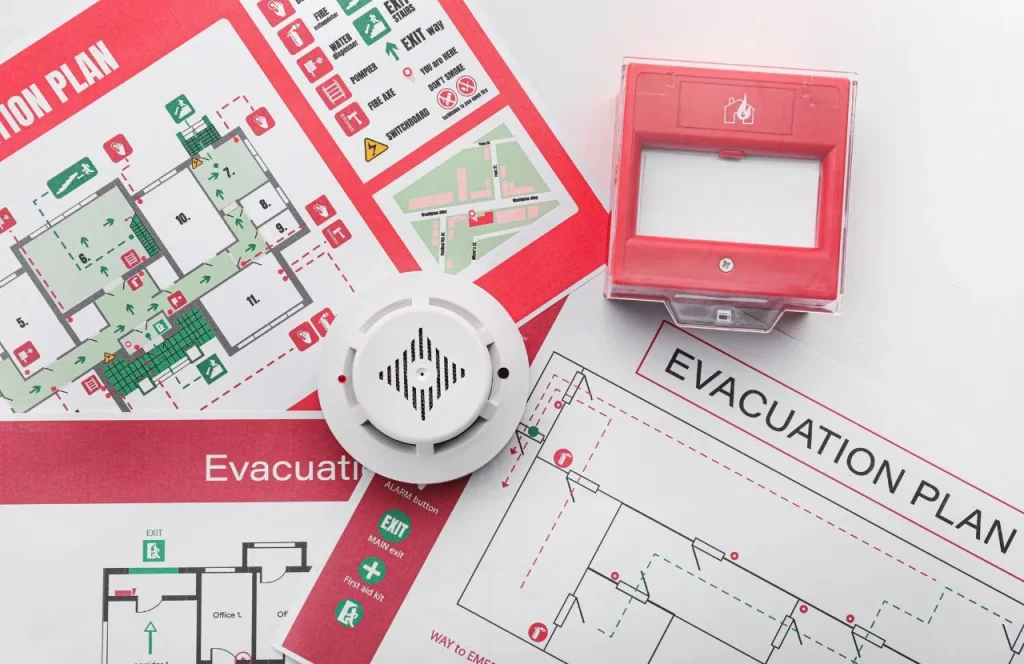An effective fire evacuation plan ensures workplace safety and protects employees during emergencies. Fires can occur unexpectedly, and having a clear, well-practiced plan minimizes chaos, saves lives, and safeguards property. Businesses must prioritize fire evacuation planning as part of their broader emergency preparedness strategy.
Why a Fire Evacuation Plan is Crucial
Fires in the workplace can have devastating consequences, including loss of life, injuries, and financial damages. A comprehensive evacuation plan is essential for several reasons:
- Life Safety: A clear plan ensures employees can evacuate safely and efficiently.
- Regulatory Compliance: Adhering to Australian emergency evacuation plan standards helps businesses meet legal obligations.
- Property Protection: Swift action can prevent fires from spreading, reducing asset damage.
- Emergency Preparedness: A well-designed plan fosters confidence and readiness among employees.
By implementing an evacuation plan, businesses create a safer work environment and demonstrate a commitment to employee well-being.
Key Components of an Effective Fire Evacuation Plan
A robust fire evacuation plan should include the following elements:
- Risk Assessment
Conduct a thorough evaluation of potential fire hazards in the workplace, such as flammable materials, electrical equipment, and cooking areas.
- Evacuation Routes
Identify and mark clear evacuation routes that lead to designated assembly points. Ensure pathways are unobstructed and comply with local building codes.
- Assembly Points
Designate safe areas outside the building where employees can gather after evacuation. These should be far enough from potential hazards.
- Emergency Contacts
Provide a list of emergency contact numbers, including those of local fire departments and first responders.
- Roles and Responsibilities
Assign specific roles during an evacuation, such as fire wardens, to coordinate the process and ensure accountability.
- Communication Systems
Install alarms, public address systems, and signage to inform employees during emergencies.
Developing and Practicing the Plan
Creating an evacuation plan is only the first step. Regular practice and updates are equally essential to ensure its effectiveness.
Steps to Develop and Maintain a Fire Evacuation Plan:
- Draft the Plan
Incorporate risk assessments, evacuation routes, and roles into a cohesive document that is accessible to all employees.
- Train Employees
Educate staff on the plan’s details, including evacuation routes, assembly points, and emergency procedures.
- Conduct Drills
Schedule regular fire drills to practice the plan and identify gaps or issues.
- Review and Update
Reassess the plan periodically, especially after workplace changes or updates to emergency evacuation plan Australian standards.
- Seek Expert Advice
Consult fire safety professionals for guidance on improving the plan and ensuring compliance.
The Role of Australian Standards in Evacuation Planning
Compliance with emergency evacuation plan Australian standards is critical for businesses operating in Australia. These standards provide a framework for developing effective plans prioritizing safety and efficiency. Key requirements include:
- Clear Signage: All evacuation routes must be well-marked with illuminated exit signs.
- Accessibility: Plans must accommodate individuals with disabilities, ensuring equal safety for all employees.
- Fire Equipment Maintenance: Ensure fire extinguishers, alarms, and sprinklers are regularly tested and in good working order.
- Documentation: Maintain a written evacuation plan and keep it readily available for employees and inspectors.
Adhering to these standards enhances workplace safety and helps businesses avoid legal and financial penalties.
Benefits of Collaborating with Fire Safety Professionals
Partnering with fire safety experts can significantly improve the quality and effectiveness of your fire evacuation plan. Professionals can:
- Conduct Risk Assessments: Identify hazards and vulnerabilities in the workplace.
- Provide Training: Offer tailored training programs for employees and fire wardens.
- Evaluate Plans: Test the plan’s effectiveness through simulated drills.
- Ensure Compliance: Guide businesses in meeting Australian standards and regulations.
Conclusion
A comprehensive fire evacuation plan is a cornerstone of workplace safety. By identifying risks, establishing clear procedures, and adhering to Australian emergency plan standards, businesses can protect their employees and operations during emergencies. Regular training, drills, and expert guidance enhance the plan’s effectiveness. Trusted names like First 5 Minutes play a vital role in helping organizations prepare for emergencies, ensuring the safety and well-being of everyone involved.


